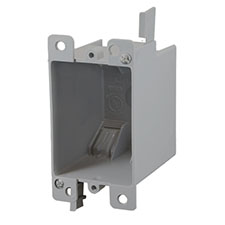
How to Bring Power Where It’s Needed After the Walls Are Up
Chuck Ross
I’ve owned three homes in my life. The youngest was 41 years old when I moved in and the other two were both over 80. I chose all three based on a combination of affordability and character – I’m a sucker for period features like ceiling molding and solid-pine paneling. Every older house is a little bit different, I’ve found, but one thing almost all of them share is an indadequate number of electrical receptacles.
All three of my homes were built before the National Electrical Code (NEC) began requiring receptacles at least every 12 ft., so that no point along a wall is more than 6 ft. from an outlet. (They also were all constructed before their local jurisdictions began enforcing building codes, which has led to its own set of issues.) So, that means in most rooms only offer two outlets to serve the table lamps, TVs and device chargers that need plugging in at any one time. Surge-suppressing power strips – UL-listed, of course – have become essential.
It's for situations like mine that electrical products manufacturers have developed electrical boxes that allow electricians an easier way to install outlets, switches and overhead lights and fans in existing construction. Aptly called “old work” boxes, these retrofit products don’t need to be attached to a stud – instead, they’re designed to be anchored to existing drywall or plaster, so any holes cut into the wall don’t have to be larger than the boxes, themselves.
Old work boxes come in several designs. Some have simple exterior flanges with screw holes for attaching to surrounding drywall, while others also feature winged tabs that can flip up from inside the box to grab onto the drywall from behind, as well, for even better stabilization. An additional option, integral wire clamps, can hold wiring in place at its entry point to make sure connections stay secure as receptacles or switches are pushed into place.
All three of my homes were built before the National Electrical Code (NEC) began requiring receptacles at least every 12 ft., so that no point along a wall is more than 6 ft. from an outlet. (They also were all constructed before their local jurisdictions began enforcing building codes, which has led to its own set of issues.) So, that means in most rooms only offer two outlets to serve the table lamps, TVs and device chargers that need plugging in at any one time. Surge-suppressing power strips – UL-listed, of course – have become essential.
It's for situations like mine that electrical products manufacturers have developed electrical boxes that allow electricians an easier way to install outlets, switches and overhead lights and fans in existing construction. Aptly called “old work” boxes, these retrofit products don’t need to be attached to a stud – instead, they’re designed to be anchored to existing drywall or plaster, so any holes cut into the wall don’t have to be larger than the boxes, themselves.
Old work boxes come in several designs. Some have simple exterior flanges with screw holes for attaching to surrounding drywall, while others also feature winged tabs that can flip up from inside the box to grab onto the drywall from behind, as well, for even better stabilization. An additional option, integral wire clamps, can hold wiring in place at its entry point to make sure connections stay secure as receptacles or switches are pushed into place.
Photo courtesy of CANTEX



